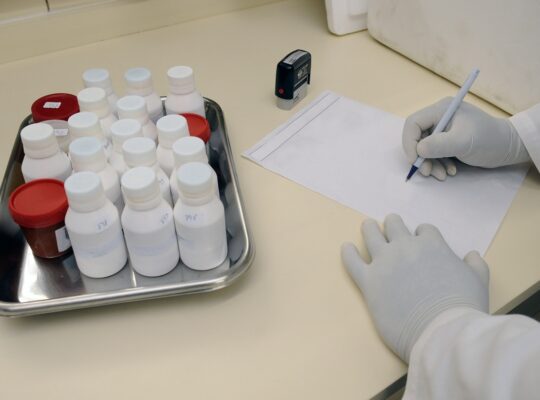Table of Contents
PHARMACOLOGY-I
CHAPTER: General Pharmacology
SHORT ESSAY 5X1=5 MARKS
1. Write a note on pharmacodynamic drug interaction.
2. Write a note on pharmacokinetic drug interaction.
3. Write a note on preclinical evaluation
4. Explain Drug tolerance in detail
5. Write a note on drug dependence and explain its mechanism
6. Factors affecting drug actions
7. Write a note on drug interactions.
8. Explain different mechanisms of drug absorption
9. Explain the factors affecting absorption.
10. Explain Phase-I metabolism in detail
11. Explain Phase-II metabolism in detail
12. Explain the factors affecting metabolism of drugs
13. Write different routes of administration along with their merits & demerits
14. Explain the different phases of clinical trials
15. Define bioavailability? Explain the factors affecting bioavailability.
16. Write a note on mechanism of drug action.
17. Write a note on G-protein coupled receptors
18. Write a note on different types of receptors
19. Explain the factors affecting drug action
20. Importance of plasma protein binding
21. Define subacute toxicity with example
22. Give any two examples for acute toxicity
SHORT ANSWERS 2X1=2 MARKS
1. Define Prodrug
2. Define First pass effect
3. Define Therapeutic index
4. Define Bioequivalence
5. Explain Child dose calculation
6. Define cross tolerance with example
7. Define iontophoresis and its uses
8. What are the different Source of drugs
9. Define Drug dependence & Drug abuse
10. Explain Tachyphylaxis
11. What are Adverse drug reactions? Give Example.
12. Define Apparent volume of distribution
13. Define Additive effects with examples
14. Define synergistic effects with examples
15. Enlist Cholinergic receptors
16. Define Dose response relationship
17. Merits & Demerits of Intrathecal route of administration
18. Define Competitive antagonism with example
19. Define non-Competitive antagonism with example
20. Define Placebo
21. Merits & Demerits of nasal route of administration
22. Merits & Demerits of sublinguial route of administration
CHAPTER: Drugs acting on ANS
LONG ESSAY 10X1=10 MARKS
1. Classify adrenergic agonists with suitable examples. Explain the pharmacology of Nor-adrenaline
2. Write the classification of cholinomimietics. Explain the pharmacology of acetylcholine.
3. Explain the pharmacology of adrenergic blockers
4. Classify anticholinergics with examples. Describe the pharmacological actions of atropine.
5. Write a note on adrenergic and cholinergic receptors
6. Explain the Pharmacology Neuromuscular blockers
SHORT ESSAY 5X1=5 MARKS
1. Define ganglionic blockers with examples. Explain their mechanism of action and therapeutic uses.
2. Write a note on antiparkinsonism drugs.
3. Drugs used in Myasthenia gravis
4. Explain the phases of general anaesthesia
5. Explain the pharmacology of nicotine
6. Classify Peripherally acting skeletal muscle relaxants. Explain the pharmacology of D- tubocurarine
7. Write a note on atropine
8. Explain pharmacology of levodopa & carbidopa
9. Write a note on succinylcholine
SHORT ANSWERS 2X1=2 MARKS
1. Dales vasomotor reversal phenomenon
2. Define Mydriatics and give two examples
3. Define miotics and give two examples
4. Mechanism of Pancuronium
5. Mechanism of Organophosphates
6. List of cholinoceptors antagonists
7. Mechanism of Nicotine
8. Clinical uses of Hyoscine
9. Give four examples for Catecholamines
10. Examples and uses of Anticholienesterases
11. Mechanism of action and uses of Pseudostyigmine
12. Clinical uses of scopolamine
13. Adverse effects and clinical uses of prazocin
CHAPTER: Cardiovascular Acting drugs
LONG ESSAY 10X1=10 MARKS
1. What are antihypertensive drugs? Classify them with examples. Explain the mechanism of action & therapeutic uses of ACE inhibitors
2. Define CHF. Classify the drugs used for the treatment of CHF. Add a note on digitalis.
3. Classify anti-arrhythmic drugs. Explain membrane stabilizing agents.
4. Classify antianginal drugs. Write the pharmacology of nitrovasodilators
5. Classify hypolipidemic agents. Explain the pharmacology of statins
6. Explain in detail the pharmacology of adrenergic blockers and centrally acting antihypertensives.
SHORT ESSAY 5X1=5 MARKS
1. Explain the mechanism, therapeutic uses & adverse effects of Cholistyramine.
2. Explain the pharmacology of fibrates
3. Discuss the pharmacological actions of digitalis
4. Write a note on calcium channel blockers
5. Explain the pharmacology of atorvastatin
6. Explain the pharmacology of diuretics in the treatment of hypertension
SHORT ANSWERS 2X1=2 MARKS
1. Adverse effects of reserpine
2. Two Adverse effects of Quinidine
3. Clinical uses of Simvastatin
4. Mechanism of hydralazine
5. Mechanism of losartan
6. Give 2 examples for beta blockers with intrinsic symapthomimetic activity
7. Clinical uses of Atenolol
8. Give any two examples for cardiotonics
9. Uses and adverse effects of carvedilol
10. Uses and adverse effects of Nifedipine
11. Mechanism of action of Procainamide
12. Two Adverse effects of Quinidine
13. Give examples for Non- selective beta blockers
14. Give 2 examples for proarrythmic drugs
15. Clinical uses and mechanism of niacin
CHAPTER: Drugs acting on CNS
LONG ESSAY 10X1=10 MARKS
1. Classify narcotic analgesics. Write the pharmacology of morphine
2. Classify anticonvulsants. Write the mechanism of action and pharmacology of phenytoin.
3. Classify NSAIDS. Explain the pharmacology of Aspirin
4. Classify anti-depressants. Write a note on tricyclic antidepressants
5. Classify Hypnotics & Sedatives with examples. Explain the pharmacology of diazepam.
6. Explain different phases of general anaesthesia and Classify general anesthetics with examples
7. Explain the pharmacology of alcohol
8. Classify antipsychotics. Explain the pharmacology of atypical antipsychotics.
9. Explain the mechanism of action and adverse effects of general anaesthetics
SHORT ESSAY 5X1=5 MARKS
1. Explain the pharmacology of barbiturates
2. Explain the pharmacology of buspirone
3. Explain the pharmacology of tramadol
4. Write pharmacology of carbamazapiene
5. Explain the pharmacology of fluxotine
6. Write a note on monoaminooxidase (MAO) inhibitors
7. Classify local anesthetics. Explain the pharmacology lignocaine.
8. Classify anxiolytics. Explain about phenobarbitone
SHORT ANSWERS 2X1=2 MARKS
1. Mechanism of Disulfiram
2. Two Examples for Cognition enhancers
3. Clinial uses of naltrexone
4. Clinical uses & adverse effects of Fluoxtine
5. Two Clinical uses of Pentibarbitone
6. Two clinical uses of Ethosuccinamide
7. Mechanism of Valproic acid
8. Mechanism of Etoricoxib
9. Calssify Opiod anagonists with example
10. Mechanism of local anaesthetics
11. Two adverse effects of Buspirone
12. Give examples for hallucinogens
13. Give examples for psychoactive drugs
14. Ant two adverse effects of diethyl ether
15. Give examples of typical antipsychotics
16. Any two sideeffcets of haloperidol
CHAPTER: Drugs acting on Respiratory system
SHORT ESSAY 5X1=5 MARKS
1. Write a note on drugs used in the treatment of COPD.
2. Classify the drugs used in the treatment of asthma with examples.
3. Explain the pharmacology of bronchodilators.
SHORT ANSWERS 2X1=2 MARKS
1. Clinical uses of pseudoephedrine
2. Adverse effects of Guaifenesin
3. Define antitussives with examples
4. Mechanism of action of cromolyn sodium
5. Clinical uses of monteleukast
6. Define Mucolytics. Give any two examples
7. Define Expectorants. Give any two examples
8. Define Nasal Decongestants. Give any two examples
9. Any two adverse effects of Theophylline
10. Any two clinical uses of salbutamol
11. Any two adverse effects of terbutaline
CHAPTER: Hormones & their related drugs
SHORT ESSAY 5X1=5 MARKS
1. Classify oral hypoglycemic agents & explain the pharmacology of metformin.
2. Classify Sulfonyl ureas. Explain their mechanism of action and adverse effects.
3. Classify different types of insulin. Explain its pharmacology.
4. Write a note on antithyroid drugs.
5. Explain the pharmacology of levothyroxine
6. Write a note on Oral Contraceptives.
7. Classify uterine stimulants. Write a note on oxytocin.
8. Explain mechanism, pharmacokinetics and adverse effects of thiazolidenediones
9. Explain the Pharmacological actions of various sex hormones
SHORT ANSWERS 2X1=2 MARKS
1. Mechanism of action of radioiodine
2. Define and give two examples for tocolytics
3. Name any two sex hormones and their uses
4. Clinical uses of progesterone
5. Adverse effects of estradiol
6. Mechanism of acarbose
7. Any two adverse effects of insulin therapy
8. Give examples for insulin analogues
9. Adverse effects of meglitinides
CHAPTER: Autocoids
SHORT ESSAY 5X1=5 MARKS
1. Explain the Pharmacology of histamine
2. classify antihistamines with examples and mention their adverse effects.
3. Write a note pharmacology on 5–HT.
4. Write a note on Lipid derived autocoids
5. Write the pharmacological actions of 5HT antagonist
SHORT ANSWERS 2X1=2 MARKS
1. Define autocoids. Give any two examples
2. Give examples for Lipid derived autacoids
3. Give physiological significance of autocoids
4. Clinical uses of plate activating factors
5. any two examples for leukotriene blockers
6. Any two Adverse effects of antihistaminic drugs
7. Write any two clinical uses of prostaglandins
8. any two side effects of chlorphenaramine
9. Give any two examples of H1 antihistaminics
10. Clinical uses of H2 antihistaminics.







